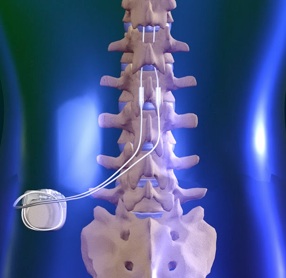
New study shows that higher frequency spinal cord stimulation is more effective for the treatment of chronic pain
It has been estimated that 1 in 4 people in the US suffer from some form of chronic pain in their lifetime. The duration of this pain differs from person to person, spanning several weeks to many years.
Many sufferers of long-term chronic pain can have their daily wellbeing severely affected if treatments fail to offer appropriate levels of pain relief.
Of the more than 1.5 billion people worldwide said to suffer from chronic pain, the most common area affected is the lower back. The frequency of this is 23-26% of the global population.
Not surprisingly, this has been a hot area of research, which has produced treatment options from opioids to surgery. Opioids, while very effective for analgesia, can produce unwanted long term problems like dependence for chronic pain patients.
For this reason, surgical options are frequently presented for long term chonic pain patients. One such technique is spinal cord stimulation therapy (SCS), where pulses are delivered to the spinal cord by a small device implanted under the skin, emitting a form of paresthesia. As many as 50,000 patients in the US undergo SCS ever year to combat chronic pain.
Paresthesia is a sensation akin to tingling and is a result of SCS. When a device is turned on, an electrical current interrupts the pain signal being sent to the brain. Although a patient’s pain is not cured, SCS hopes to offer some temporarily relief.
Although SCS has been shown to reduce pain, many patients find the paresthesia that accompanies this to be uncomfortable.
This was to be the catalyst for scientists to develop a new form of SCS, one which still alleviates pain but reduces the effects of paresthesia in patients.
Traditional SCS uses frequencies of 40-60 hertz. Scientists decided to intensify this and use high-frequency pulses capable of delivering up to 10,000 hertzes. The new treatment has been named HF10.
Prof. Leonardo Kapural, lead study author and professor of anesthesiology at Wake Forest University School of Medicine and clinical director at Carolinas Pain Institute at Brookstown in Winston-Salem – both in North Carolina – believes the research to be the first of its kind.
“This is the first long-term study to compare the safety and effectiveness of high-frequency and traditional SCS therapy for back and leg pain,” he explains.
Scientists examined 171 patients with chronic back or leg pain, of whom 90 received HF10 therapy and 81 were treated with traditional SCS.
After 3 months, researchers found 85% of back pain and 83% of leg patients receiving HF10 therapy reported a 50% reduction in pain or greater. These patients also reported no experience of paresthesia.
In contrast, patients undergoing SCS reported less effective results. Only 44% of back pain patients and 56% leg patients experienced a minimum 50% reduction in pain.
The study ran over a 12-month period and found HF10 to be more effective compared with traditional SCS. More than half of the HF10 sample group reported being “very satisfied” with the outcome, compared with just 32% of patients who received traditional SCS.
Prof. Kapural hopes this research will be an important step toward treating chronic pain.
SCS represents an alternative for those patients who wish to avoid surgery or drugs such as opioids. According to a 2011 report, at least 100 million adult Americans suffer from chronic pain. In the same report, it was also estimated that chronic pain costs society between $500-635 billion a year.
Dr. Hanna has many years of experience performing SCS procedures for chronic pain patients. To learn if this procedure might be right for you, please make an appointment with Dr. Hanna at the Florida Spine Institute in Clearwater, FL. His contact information can be found here.


 You only need to know one thing about your back —
You only need to know one thing about your back —